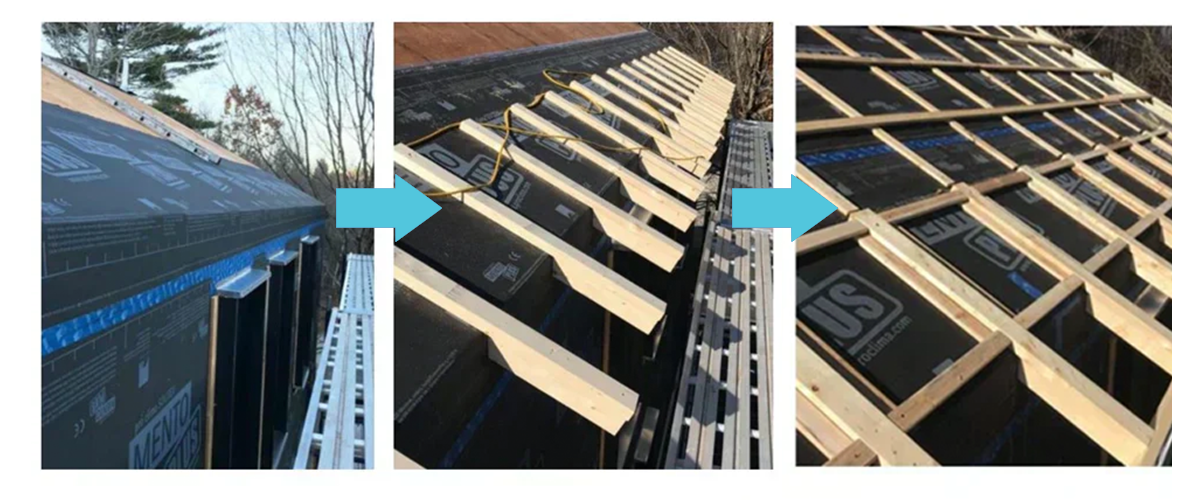This blog is part of a series about air barrier transitions to help continuity. Check out Air Barrier Transitions Simplified: Floor Transitions, and Air Barrier Transitions Simplified: Foundation to Wall
Have you done the 'red line test' on your plans and struggled to understand how to maneuver between floors, or from wall to roof? This series offers recommended details for simplifying your air barrier transitions and planning for sequencing that saves you construction time.
Each of Pro Clima's exterior membranes include the monolithic TEEE film that creates an extremely airtight and waterproof membrane that is still vapor permeable. These membranes are all rated for wall and pitched roof applications, but vary in fleece protection for UV resistance and tear / puncture resistance. The SOLITEX ADHERO line of membrane additionally includes a fully adhered backing that self-seals around fastener penetrations.
Many modern projects utilize “monopoly framing”, which allows an easy direct roof to wall WRB / exterior air barrier connection. A big advantage of using this framing approach is that the roof’s framing doesn’t continue through the sheathing to the exterior, creating roof overhangs. Continuous rafter tails have thermal bridging concerns and create exterior WRB / air barrier penetrations that require sealing.
Monopoly framing examples:
Taping around continuous rafter tails:
Ideally, roofs still have overhangs to help with waterproofing and/or shading. Projects utilize applied rater tails to create the overhang without continuous rafter tails. This is primarily done by creating a custom cut rafter tail shape that is extended up the roof for fastening support and/or creating a vented roof cavity. Fasteners penetrating the SOLITEX MENTO membranes need to be waterproofed with the TESCON NAIDECK tape. If the project is using a SOLITEX ADHERO membrane then the membrane will self-seal around the fastener penetration creating a watertight seal.

The framing that continues up the pitched roof can be encapsulated with exterior insulation such as mineral wool or wood fiberboard insulation. And the framing can be used to start the support for an additional layer of sheathing while also creating the vented cavity below this additional layer of sheathing that acts as the substrate for asphalt shingle or similar roof finishes.
Here’s a great step by step applied rafter tail from 475’s Instagram:
Rafter tails can also be applied and supported with metal hardware supports or ledger supports.

Transitions between floors
If the project is venting below the sheathing that’s applied to the roof trusses or framing then it’s best to transition the exterior wall’s air barrier over the wall’s top plates to be able to be air sealed to an interior air barrier — INTELLO Plus or INTELLO X air barrier membrane that’s installed on the interior side of the roof’s insulation. Using a wide TESCON VANA 200 tape (or multiple pieces of any width TESCON VANA) can seal the top edge of the airtight WRB and wrap over the wall’s framing to the interior side of the top plate.
Projects can use the same technique for interior to exterior air barrier transitions at floor systems. The top plates of the wall are taped and then the rim joist is taped from the top plate over and around the rim joist to the subfloor sheathing. The wall sheathing is held and all of this transition taping is done before concealing the rim joist with wall sheathing.
These best practices are integreted into a variety of construction types in 475’s Smart Enclosure Details. Download them for free to simply drag and drop details into your plans.























